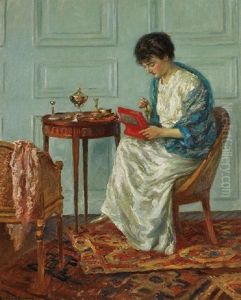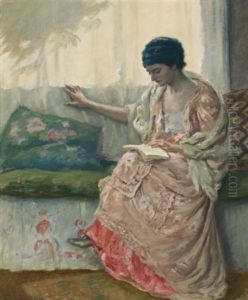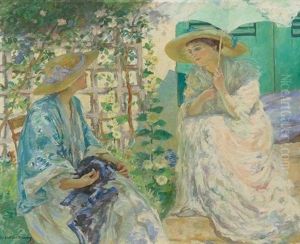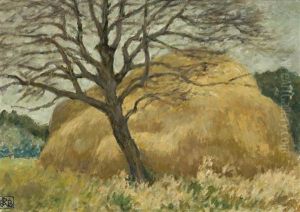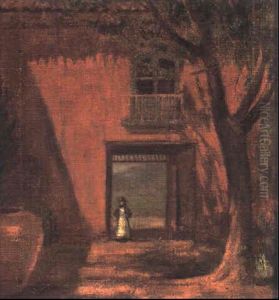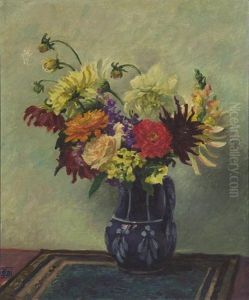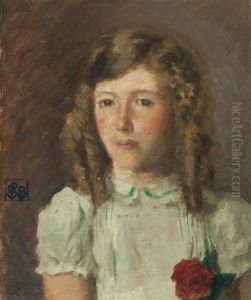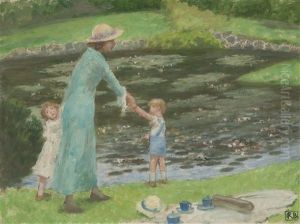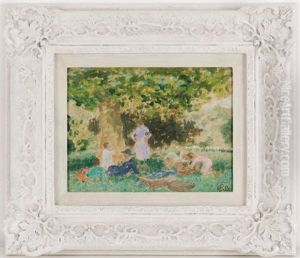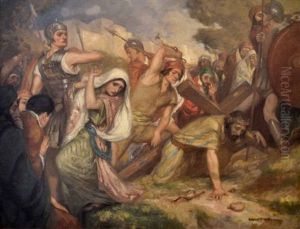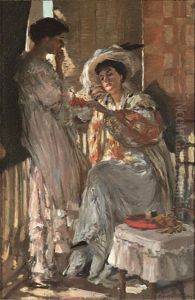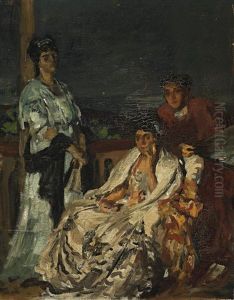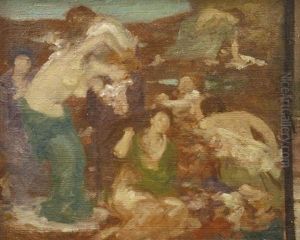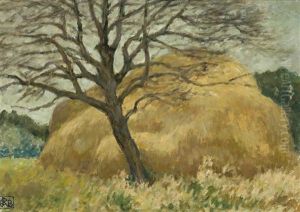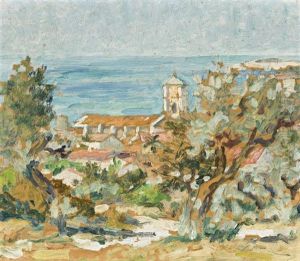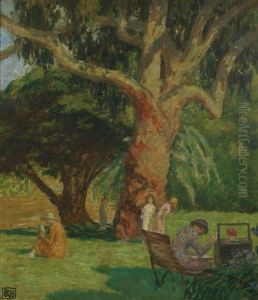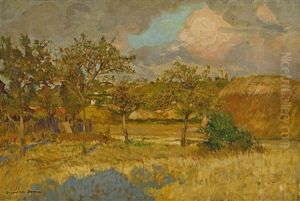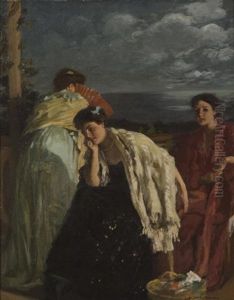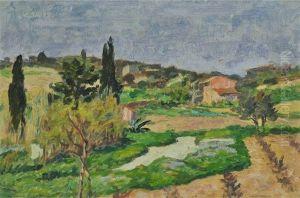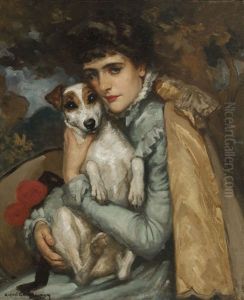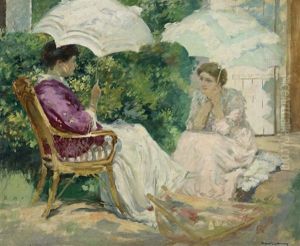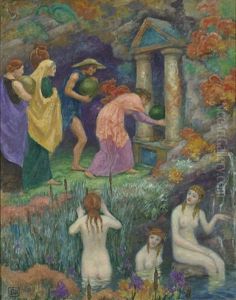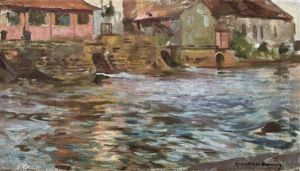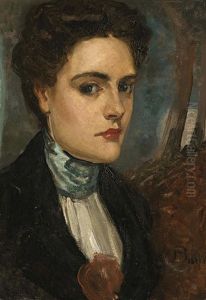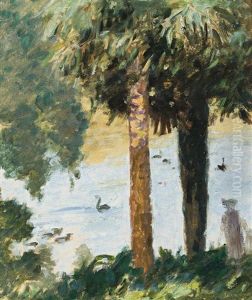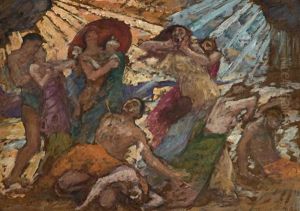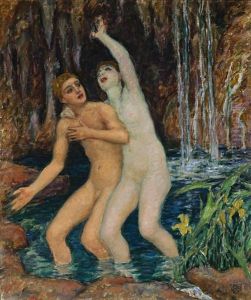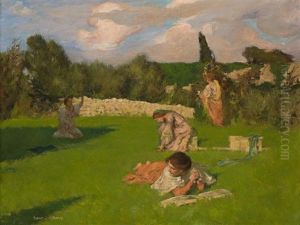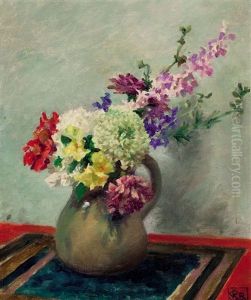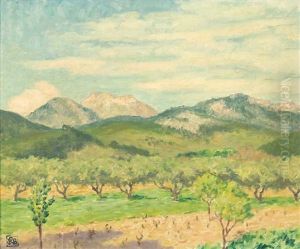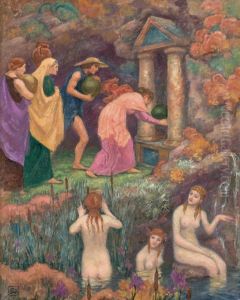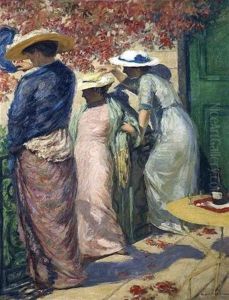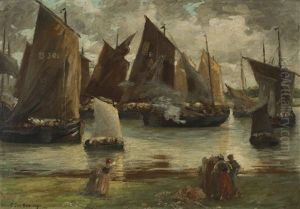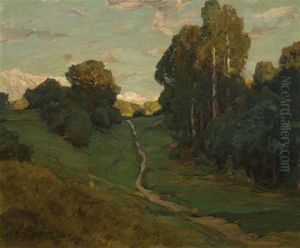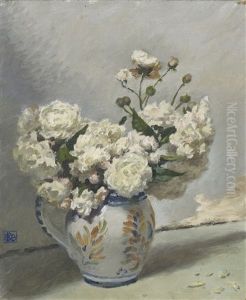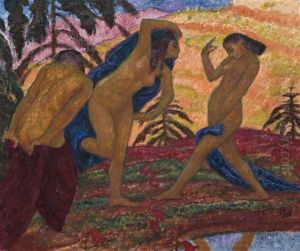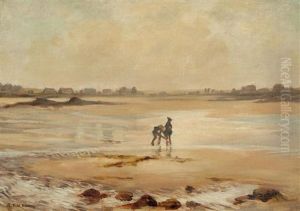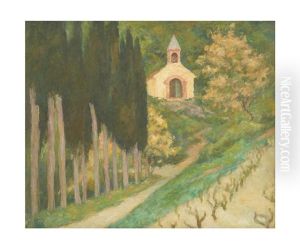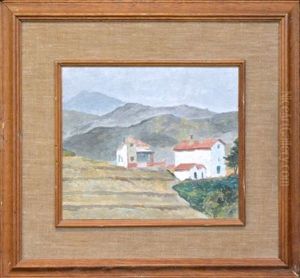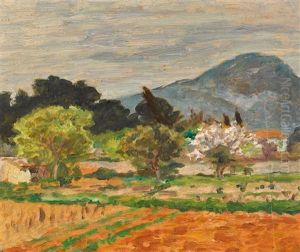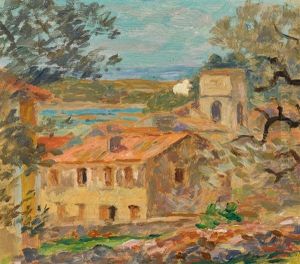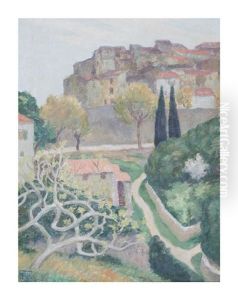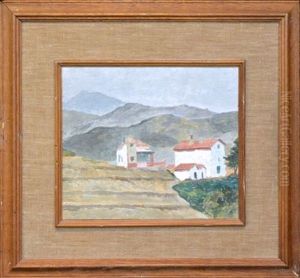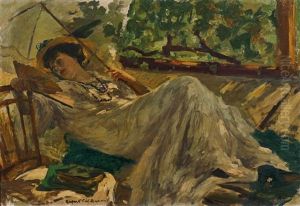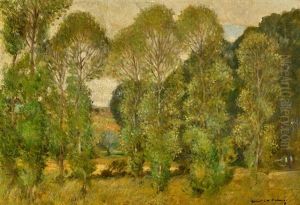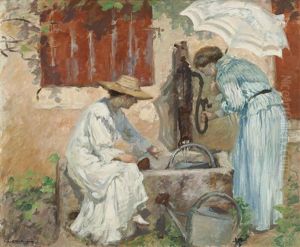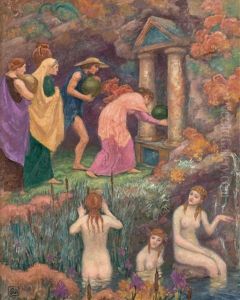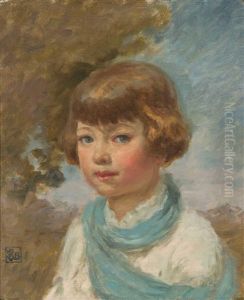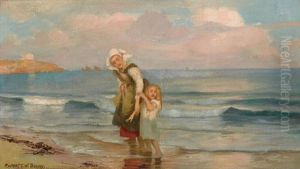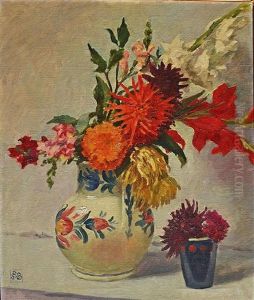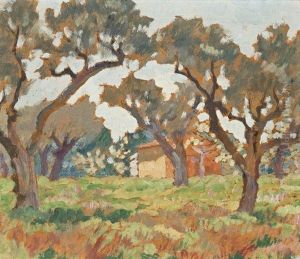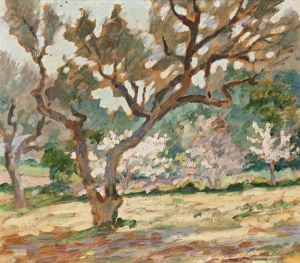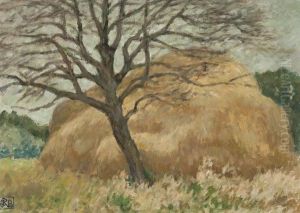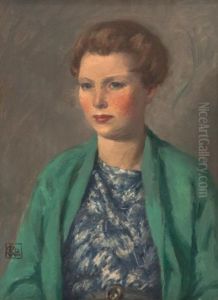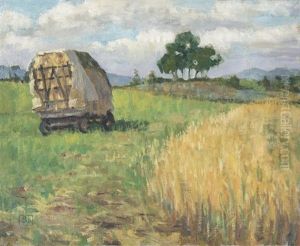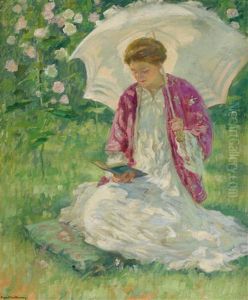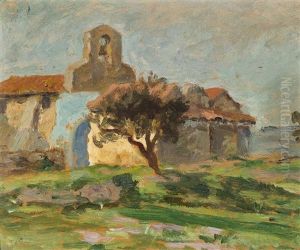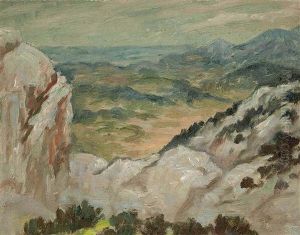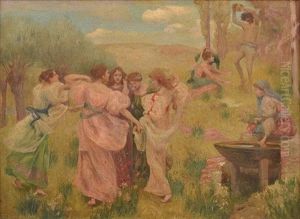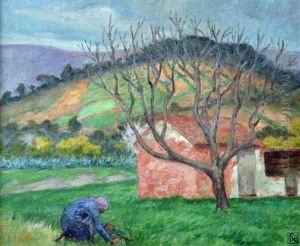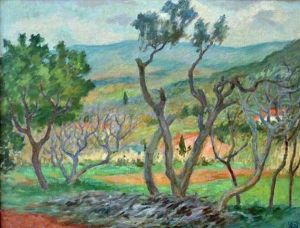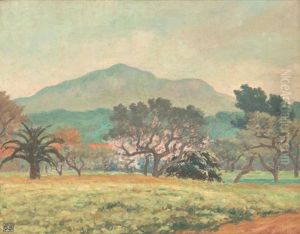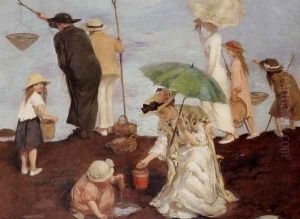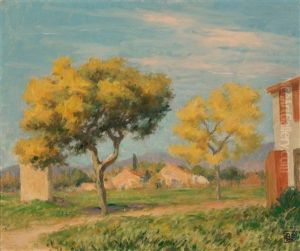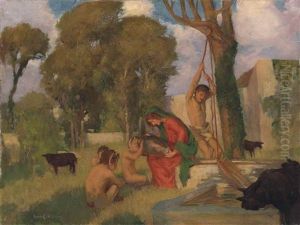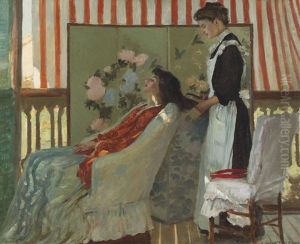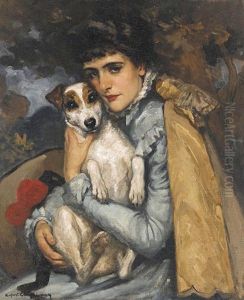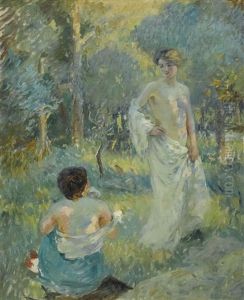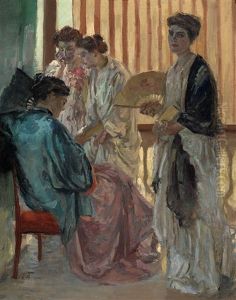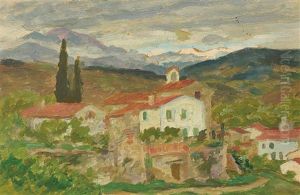Rupert Charles Bunny Paintings
Rupert Charles Bunny was an Australian painter, known for his contributions to the Symbolist movement and his work in Europe as an expatriate artist. Born on September 29, 1864, in St Kilda, Melbourne, he was the third son of Brice Bunny, a judge, and Marie Hedwig Dorothea, née Goldstein. Bunny's early life in Australia set the stage for his enduring interest in art, and he began his formal education at the University of Melbourne.
In pursuit of his artistic ambitions, Bunny relocated to England in 1884 and later moved to Paris, which was the epicenter of the art world at the time. He studied at the atelier of Jean-Paul Laurens at the Académie Julian, a popular school among English-speaking students. Bunny's style flourished as he immersed himself in the vibrant cultural scene of Paris, and he began exhibiting his work at the Paris Salon in 1888.
Bunny's oeuvre is characterized by his sensuous and idealized depictions of women, often in mythological or allegorical settings. His work also reflects the influence of French Impressionism, though he maintained a distinctive personal style. Throughout his career, he received significant acclaim in France, a rare achievement for an Australian artist during that period. In 1897, he was awarded the second-class gold medal at the Exposition Internationale in Paris, and in 1907, he became the first Australian artist to have a solo exhibition at the Galerie Georges Petit, a prestigious art venue in Paris.
Despite his success in Europe, Bunny remained connected to Australia, and his work was also well-received in his homeland. He married fellow artist Jeanne Heloise Morel in 1902, who was often the subject of his paintings. The couple lived and worked in France for most of their lives, contributing to the rich artistic tapestry of the early 20th century.
Bunny continued to paint, exploring different styles and subjects, including landscapes and still life compositions, until his later years. He returned to Australia in 1933 and settled in Melbourne, where he lived until his death on May 25, 1947. Posthumously, Bunny's artistic legacy has been commemorated in various retrospectives, and his work is held in collections across Australia, including the National Gallery of Australia, the Art Gallery of New South Wales, and the National Gallery of Victoria.
